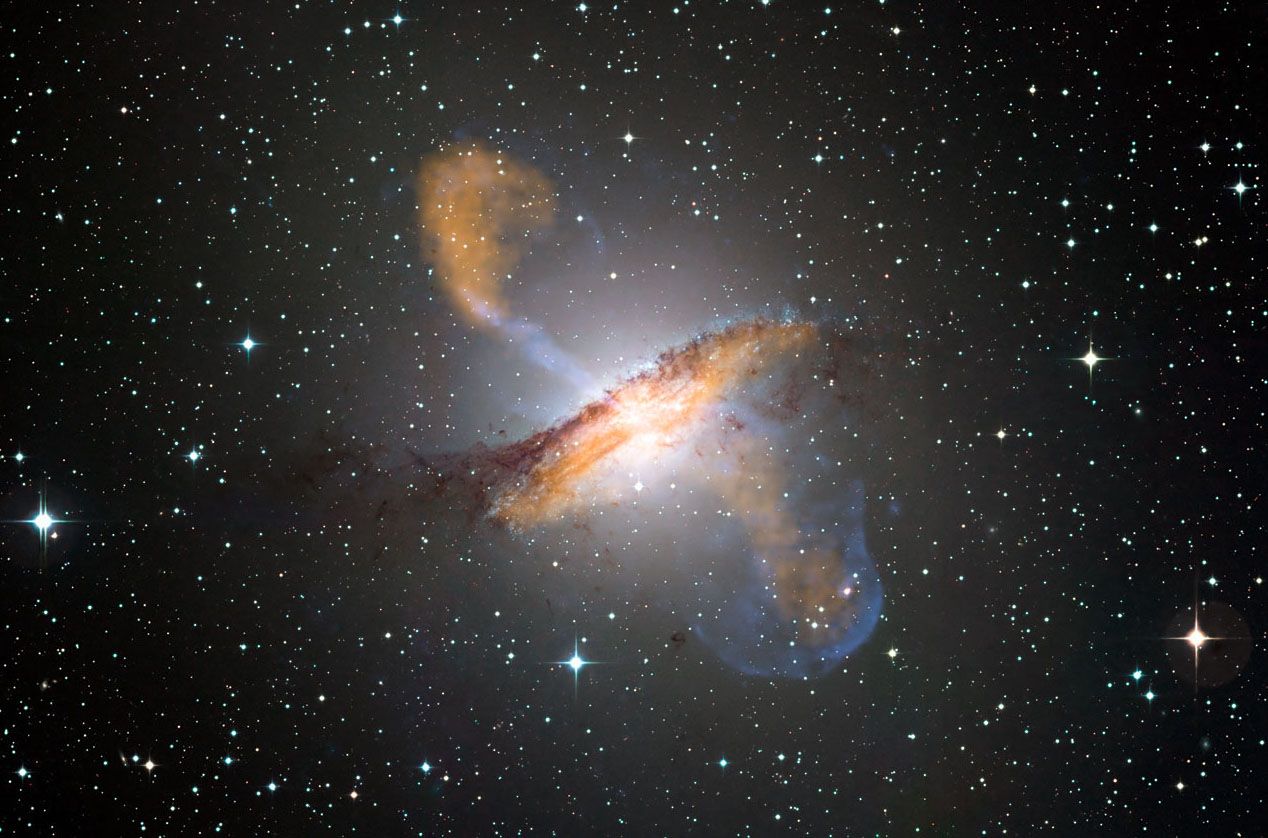
Supermassive black holes can spurt glowing jets of plasma. On rare occasions, these disintegrate into enormous plumes of light and heat which shine bigger and brighter than their surrounding galaxy. Mathematicians from the University of Leeds, U.K., have made a surprising discovery about these behemoth explosions.
"Jets are very stable and propagate over very long distances, but they eventually break up. Less energetic jets will terminate by forming plumes whereas the highly energetic ones end in bright spots," study author Kostas Gourgouliatos told Newsweek. "This has been puzzling astronomers since the 1970s. In our paper (published today in Nature: Astronomy), we studied the cause behind this distinct behavior."
"When the jet disintegrates into a plume it releases heat, making them easier to spot on telescopes. The jets and their plumes are so bright that sometimes they outshine their host galaxies and are always more easily spotted than black holes, which are inferred indirectly, in space observations," Gourgouliatos, who is now assistant professor of mathematical sciences of Durham University, explained in a press release.
Jets—which are governed by the magnetic field of their black hole—normally appear very stable. As such, their sudden and spectacular disintegration is a puzzle for scientists. Gourgouliatos' team modeled supermassive black hole plasma jets to find out what makes them plume.
Jets behave like water in a pipe

They discovered the jets act like water running through a curved pipe. As water rushes around these curves it can become disrupted and lose pressure. This is because of something called "centrifugal instability."
"The gas of cosmic jets travels in curved trajectories, and is susceptible to the very same instability—which is strong enough to eventually disrupt its flow completely," Gourgouliatos told Newsweek. "We were very impressed to see that, as this instability has not been considered in this astrophysical context before."
Instability begins at these curved boundaries, traveling upwards up to a single point in the jet. "Below this point the jet stays tidy and tight, but everything above will be destroyed and creates a large cosmic plume," Gourgouliatos said in the press release.
Co-author Serguei Komissarov of Leeds University School of Mathematics added, "This centrifugal instability is well-studied—but nobody expected it to be important for the jet dynamics."
Uncommon Knowledge
Newsweek is committed to challenging conventional wisdom and finding connections in the search for common ground.
Newsweek is committed to challenging conventional wisdom and finding connections in the search for common ground.
About the writer
Katherine Hignett is a reporter based in London. She currently covers current affairs, health and science. Prior to joining Newsweek ... Read more
To read how Newsweek uses AI as a newsroom tool, Click here.








